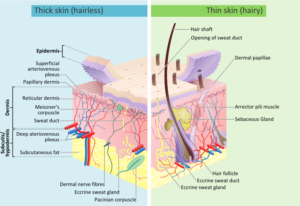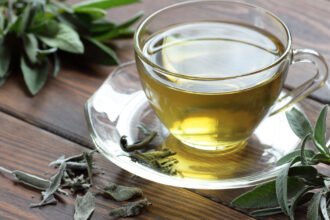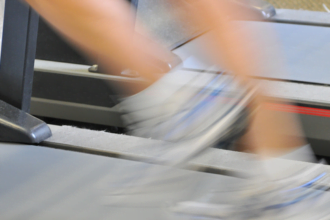 When body tissue is damaged by trauma, surgery, hypoxia, or other destructive processes, it quickly reacts to protect itself and begin the process of healing. Clean surgical wounds closed by primary intention heal rapidly and do not usually require additional medical intervention and support.
When body tissue is damaged by trauma, surgery, hypoxia, or other destructive processes, it quickly reacts to protect itself and begin the process of healing. Clean surgical wounds closed by primary intention heal rapidly and do not usually require additional medical intervention and support.
 When body tissue is damaged by trauma, surgery, hypoxia, or other destructive processes, it quickly reacts to protect itself and begin the process of healing. Clean surgical wounds closed by primary intention heal rapidly and do not usually require additional medical intervention and support. Chronic wounds and those left to heal by secondary intention will require more attention from the medical team. Most of the literature describing the phases of wound healing has been written following investigation of clean, acute wounds, and the sequence and timing of the events described thus only relates to acute wounds. It is assumed that the chronic wound follows a similar wound-healing course with the timing of events delayed or prolonged compared with acute wounds.
When body tissue is damaged by trauma, surgery, hypoxia, or other destructive processes, it quickly reacts to protect itself and begin the process of healing. Clean surgical wounds closed by primary intention heal rapidly and do not usually require additional medical intervention and support. Chronic wounds and those left to heal by secondary intention will require more attention from the medical team. Most of the literature describing the phases of wound healing has been written following investigation of clean, acute wounds, and the sequence and timing of the events described thus only relates to acute wounds. It is assumed that the chronic wound follows a similar wound-healing course with the timing of events delayed or prolonged compared with acute wounds.
All wounds must pass through three recognized physiological processes in order to achieve healing: the inflammatory phase, proliferative phase, and maturation phase. It is useful to view the stages of wound healing as distinct events with endpoints or goals that must be achieved in the proper sequence for healing to succeed. In reality, there is overlap between the phases, and an individual wound may be in several phases at the same time. When all the stages have been accomplished over the entire wound surface, complete wound healing is achieved.
Unlike acute or surgical wounds, which heal by “primary intent” – the joining of the wound edges by sutures, staples, or adhesive strips – skin ulcers and severe burns heal by “secondary intent,” through the formation of granulation tissue, contraction of the wound, and epithelialization. A normal wound heals in approximately 21 days in organized phases of inflammation, proliferation, and remodeling, but chronic wounds often stall between the inflammatory and proliferation stages, creating wounds that can last for months or even years.
Wound physiology is divided into three phases: defensive, proliferative, and maturation; each phase must be allowed to occur without impediment for healing to be complete. The defensive phase occurs from the time of injury to three days and is characterized by hemostasis and inflammation. The clotting cascade is initiated, and white blood cells mobilize to defend and protect the area from bacterial invasion. Vasodilatation and serous exudate facilitate the removal of debris and deliverance of nutrients to injured tissue. Proliferation lasts from day two until the area is healed and features granulation, contraction, and epithelialization. Granulation includes neoangiogenesis and collagen formation. Granular tissue is pale pink to beefy red, glistening, and has a rough surface due to blood vessels and collagen deposits Contraction occurs as a result of myofibroblasts pulling collagen toward the cell body, and epithelialization is the migration of epithelial cells to resurface the area. Maturation is the last phase of healing, and involves scar remodeling after wound closure and may take years. Maturation sees a scar change from red to purple/pink to white, and from bumpy to flat.
Wound management priorities include: 1) reducing or eliminating causative factors (pressure, shear, friction, moisture, circulatory impairment, and/or neuropathy), 2) providing systemic support for healing (blood, oxygen, fluid, nutrition, and/or antibiotics), and, 3) applying the appropriate topical therapy (remove necrotic tissue or foreign body, eliminate infection, obliterate dead space, absorb exudate, maintain moist environment, protect from trauma and bacterial invasion, and provide thermal insulation).
The diversity of wounds and wound care products complicates the dressing selection process; many wounds have several options for dressings that are effective. Matching wound characteristics with dressing features is one important goal in the healing process. For example, a heavily exudating wound needs an absorptive dressing, and a wound with necrotic eschar needs a dressing that facilitates debridement. Dressings fall into several categories: gauze, hydrogel, hydrocolloid, transparent film, alginate, foam, and accessory products such as enzymes, growth factors, biological dressings, compression devices, support surfaces, and methods for securing dressings.
Factors affecting healing include tissue perfusion and oxygenation, presence or absence of infection, nutrition, medications, underlying disease, mobility and sensation, and age. Circulation and adequate oxygen saturation deliver nutrients for wound healing and gas exchange. All wounds disrupting the integument are contaminated, but not necessarily infected. Bacteria compete with tissues for nutrients, prolonging the inflammatory stage and delay collagen synthesis and epithelialization. Vitamin C, the B vitamins, zinc, and copper are necessary for collagen synthesis. Vitamin A combats the effects of steroids and protein is needed for collagen and skin growth. Steroids and immunosuppressive drugs suppress the inflammatory phase thus slowing the entire healing process. Underlying chronic disease(s) also competes for nutrients, increases risk of infection, and stresses the healing process. Limited mobility and/or sensation contribute to wound formation and impair the perception of wound presence or complications.
Debridement is necessary when necrotic eschar or fibrinous slough is present in the wound base. Necrotic eschar is thick, leathery, devitalized, black tissue, and slough is white or yellow tenuous tissue. Methods of debridement are described as sharp (surgical), mechanical (dressings), autolytic (dressings) and enzymatic (enzymes). Sharp debridement is indicated for extensive necrosis or for large wounds. Mechanical and autolytic debridement are indicated for many pediatric wounds and is accomplished with dressings. Mechanical debridement is done with a wet to dry dressing using woven gauze; as wet fibers dry, tissue adheres to the fiber and is removed when the dressing is removed. Autolytic debridement is also indicated for many pediatric wounds and is done with an occlusive dressing that retains moisture on the wound and allows white blood cells and enzymes to break down necrotic tissue. Hydrocolloids, transparent films, and hydrogels are effective for autolytic debridement. Enzymatic debridement is indicated when selective debridement is desired because enzymes only work on necrotic tissue. Enzymatic preparations contain fibrinolysin, collagenase, papain or trypsin in a cream or ointment base. Enzymatic debridement is slow, but effective, and instructions for using enzymes must be followed closely.
Wound cleansing removes dressing residue, microbes, and cellular debris (may include healing tissue). Cleansing products need to be safe for healing tissue and effective at removing debris. The adage “don’t put anything in a wound you wouldn’t put in your eye” are safe words to work by. Many topical cleansing agents and antiseptics are cytotoxic, and it is imperative to weigh the risks of cytotoxicity against the benefits of cleansing effectiveness and antimicrobial activity. Normal saline is safe, effective, readily available, and inexpensive. Wound irrigation pressure needs to be high enough to remove debris and low enough to avoid traumatizing tissue. Pressures ranging from 4-15 pounds per square inch (psi) are effective for cleaning. For example, a 60cc catheter tip syringe delivers 4.2 psi, a 35cc syringe with a 19 guage needle delivers 8.0 psi, and a Water Pik at its highest setting delivers >50 psi. Frequency of wound cleansing varies with wound characteristics and dressing selection, but once a day cleansing is a minimum4,5. Clean versus sterile technique for dressing changes is constantly debated with varying outcomes and supporting arguments. Most importantly, consider the host system defenses and type of wound when deciding whether to use a clean or sterile technique for dressing changes and cleansing.
Wound assessment involves many parameters, but the following indices should be included in continued documentation of wound healing: size (length, width, depth), extent of tissue involvement (partial or full thickness; stage of pressure ulcer), presence of undermining or tracts, anatomic location, type of tissue in base (viable or nonviable), color (red, yellow, black categories), exudate, edges, presence of foreign bodies, condition of surrounding skin, and duration2. Photography is useful for documenting progress and should include a measuring scale and date.
For Inflammatory Phase, Proliferative Phase, Angiogenesis and Maturation Phase, see Report #S249.
Drawn from Report #S249: “Wound Management, Worldwide Market and Forecast to 2021: Established and Emerging Products, Technologies and Markets in the Americas, Europe, Asia/Pacific and Rest of World.”
See also Report #S190: “Surgical Sealants, Glues, Sutures, Other Wound Closure and Anti-Adhesion, Worldwide Markets, 2012-2017.”










